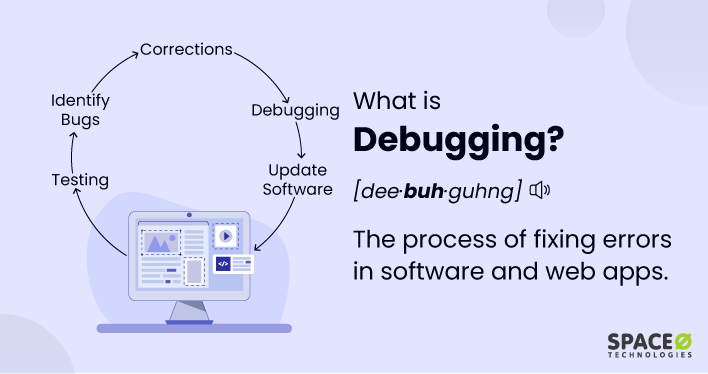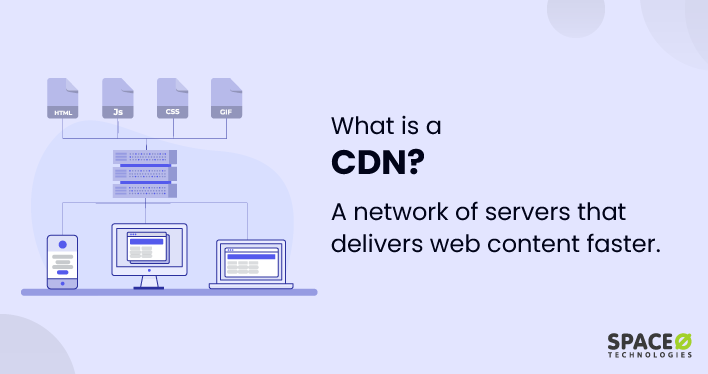Table of Contents
What is Debugging?
Debugging is a systematic process used by software developers to identify, isolate, and rectify errors, defects, or malfunctions in a computer program or software system. The goal of debugging is to correct these issues to ensure that the software behaves as intended and operates reliably.
Debugging is not just about fixing coding errors that cause a computer program to crash, but also about resolving issues that lead to incorrect or unexpected results. It is an essential part of the web/software development cycle, integral to maintaining writing code quality and optimizing performance.
While debugging, the quality analyst must understand the problem thoroughly, replicate the issue, identify the cause, implement a fix, and then test the solution to ensure the bug has been fully resolved. If you want to know what is testing process and testing types in detail, here is a guide about web application testing.
Reading this guide will help to optimize the code quality and performance optimization in software/web applications. The complexity of this debugging process can vary widely depending on the nature of the program and the severity of the bugs.
4 Different Stages of Debugging
The software development process of debugging involves four fundamental steps, often referred to as the 4- step debugging software development process.
- Identification: This is the initial step where the problem is first noticed. It could be a software crash, incorrect output, performance issue, or any other form of unexpected behavior. The goal here is to accurately describe the problem in order to start the process of fixing it.
- Isolation/Replication: In this step, the tester tries to consistently reproduce the problem. This is crucial because it’s much easier to debug a problem that can be reliably triggered. It involves unit testing debugging different input and environment configurations and narrowing down the exact circumstances under which the bug occurs.
- Resolution/Diagnosis: Once the problem can be reliably reproduced, the tester investigates to find the root cause of the problem. They may use a variety of tools and techniques to do this, including step-by-step program execution (also known as stepping through the code), examining the call stack, and analyzing variable values. Once the root cause is identified, a solution can be devised and implemented.
- Verification/Testing: After the bug has been addressed, the final step is to verify the solution. This involves re-running the scenarios that originally caused the problem to ensure that the bug is truly fixed. This step often includes adding new test cases to the software’s suite of automated unit tests to prevent the bug from reoccurring in the future.
These steps form a basic framework, but the debugging process can often be more complex and iterative, requiring developers to cycle through these steps multiple times before a problem is fully resolved.
7 Benefits of Debugging
Debugging is a crucial part of software development that involves identifying, isolating, and fixing problems or bugs in software source code. Here are the 7 benefits of debugging:
Improves Software Quality
Debugging is vital for improving the overall quality of software. By identifying and fixing coding errors or bugs, testers can ensure the software functions as intended, without unexpected behaviors or crashes. This leads to software that’s more robust and reliable, contributing to a smoother, more predictable user experience.
Enhances Understanding
The debugging process provides developers with an opportunity to better understand their software’s inner workings. Once testers identify bugs, it is feasible to gain a deeper insight into the code’s functionality, interdependencies, and how different components interact with one another. This can help them design more efficient, effective, and robust code in the future.
Saves Time and Money
While debugging may seem time-consuming initially, it actually saves both time and money in the long run. It is significantly cheaper, faster, and easier to identify bugs and fix them during the development stage than to handle an operating system failure or severe syntax error after the software has been deployed. Debugging early and often can prevent costly disruptions and repairs down the line.
Reduces Risk
By detecting and resolving bugs, debugging minimizes the risk of operating system failures, data corruption, security vulnerabilities, and other serious issues that can stem from faulty software. This contributes to maintaining operating system stability, preserving data integrity, and ensuring secure operations, which are crucial in today’s digital world.
Boosts User Satisfaction
By ensuring that the software runs smoothly and as expected, debugging significantly enhances the end user’s experience. Software free of bugs and errors leads to higher user satisfaction, trust, and loyalty, which can result in better customer retention and positive word-of-mouth for the software product.
Aids in Learning and Skill Development
Debugging is a skill in itself, pushing developers to think critically, problem-solve, and delve deeper into their source code. By understanding and resolving complex issues, testers can enhance their competency, broaden their understanding of various programming concepts, and improve their ability to write high-quality, bug-free code.
By adopting effective debugging strategies, testers can harness these benefits, turning challenges into opportunities for learning and growth. Thus, knowing debugging is integral to successful software development, enhancing code quality, reducing risks, and fostering an improved user experience.
12 Debugging Tools and Software
Here are the top 12 most commonly used debugging tools:
- GDB (GNU Debugger): A portable debugger that works for many computer programming languages, including C and C++.
- LLDB: A debugger that’s part of the LLVM project and primarily built for C, C++, and Objective-C.
- PDB (Python Debugger): A debugger for the Python computer programming language.
- JDB (Java Debugger): A command-line debugger for Java programs.
- Visual Studio Debugger: A powerful debugger integrated into the Microsoft Visual Studio IDE, primarily for .NET languages and C++.
- Chrome Developer Tools: A set of web developer tools built directly into the Google Chrome browser, which includes JavaScript debugging capabilities.
- Firebug: A discontinued but influential web development and debugging tool for Firefox.
- Xdebug: A PHP extension for powerful debugging and profiling.
- Node Inspector: A debugger for Node.js applications.
- WinDbg: A debugger for Windows applications and the Windows kernel.
- Valgrind: A programming tool for memory debugging, memory leak detection, and profiling.
- Rubymine Debugger: A Ruby and Rails IDE with the full stack of essential developer tools, including a debugger.
Remember that the best debugging tools often depend on the specific requirements of the project, the development environment, and the personal preference of the developers.
Debugging is a vital process in the software development lifecycle, playing an essential role in enhancing software quality and boosting user satisfaction. The debugging process is facilitated by debugging tools designed to ease the burden of identifying, isolating, and fixing bugs.
Understanding the principles, debugging process, and tools of debugging is indispensable for anyone involved in software creation, maintenance, or management, paving the way for efficient, reliable, and user-friendly software solutions.







